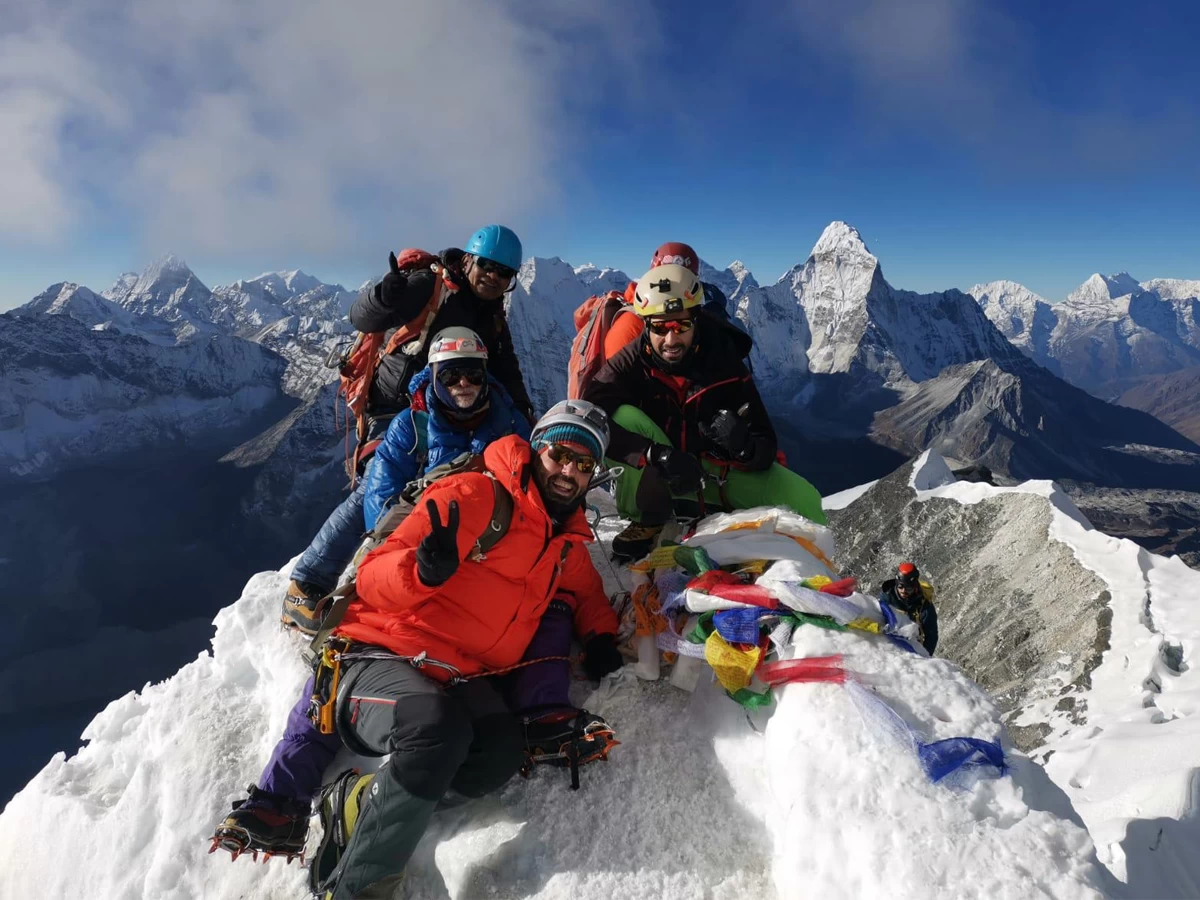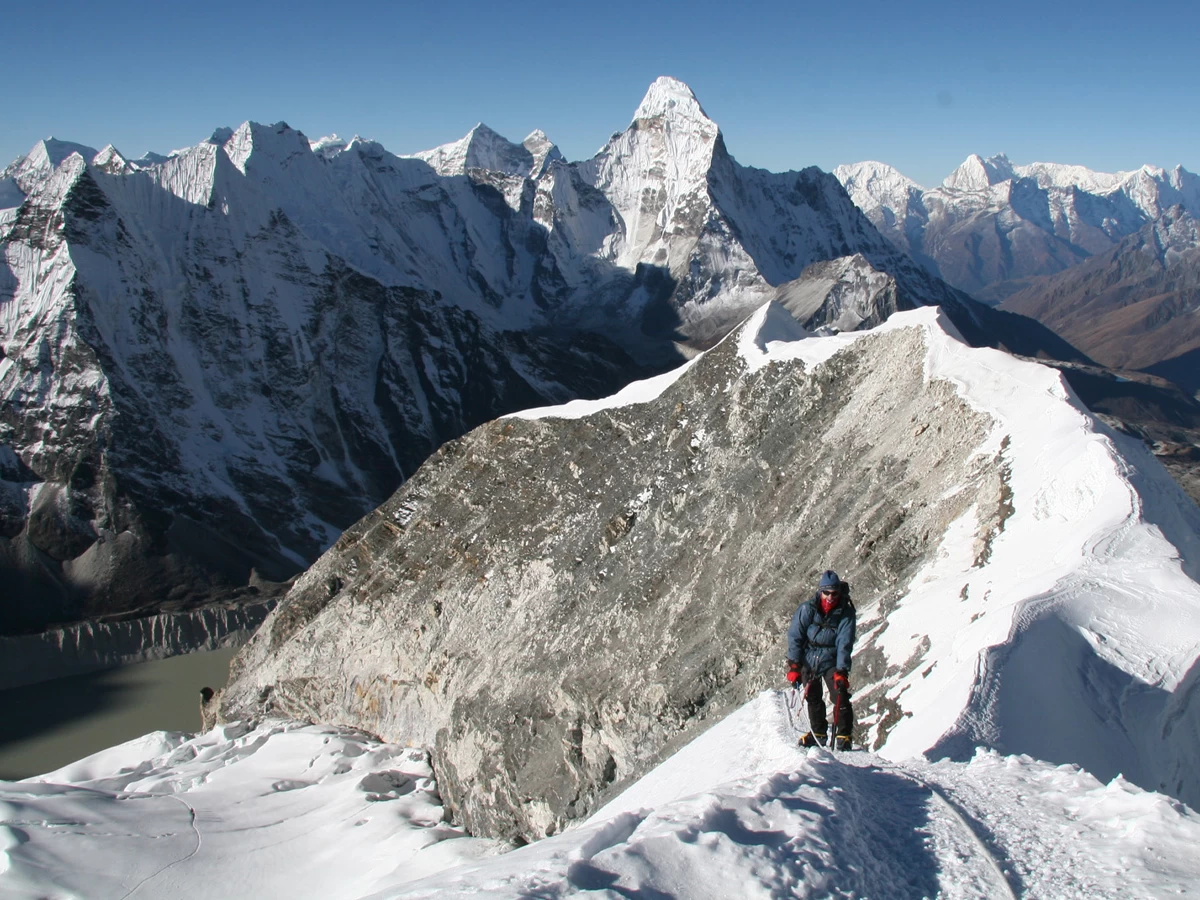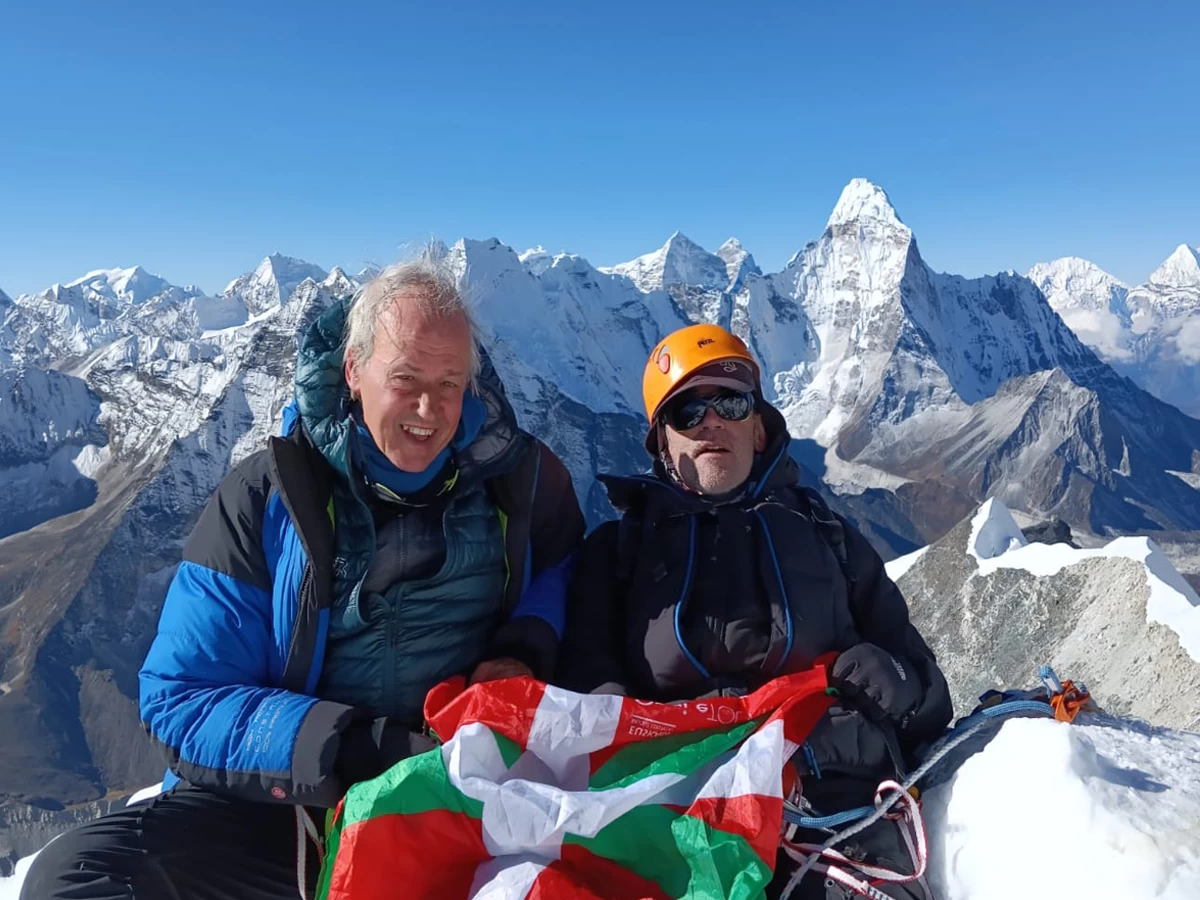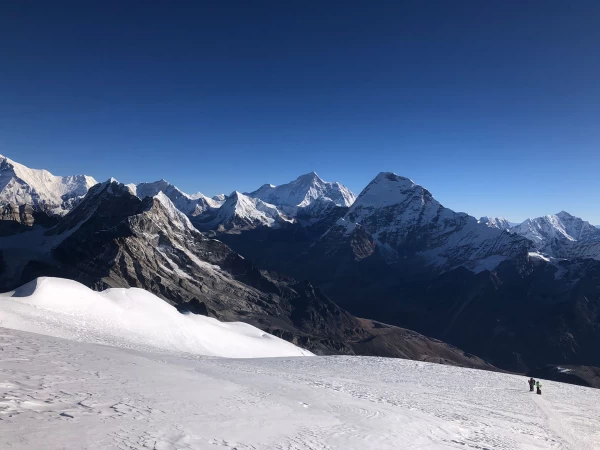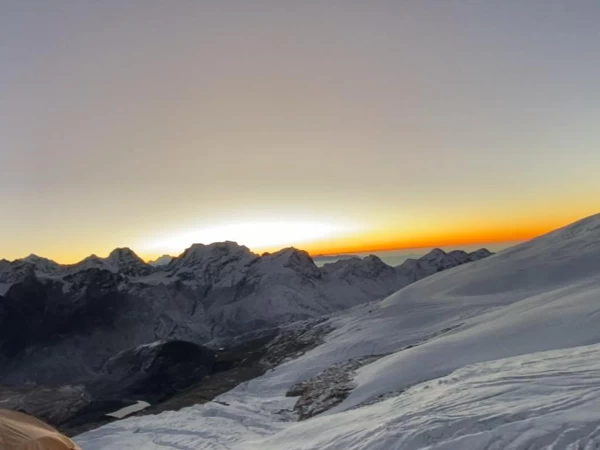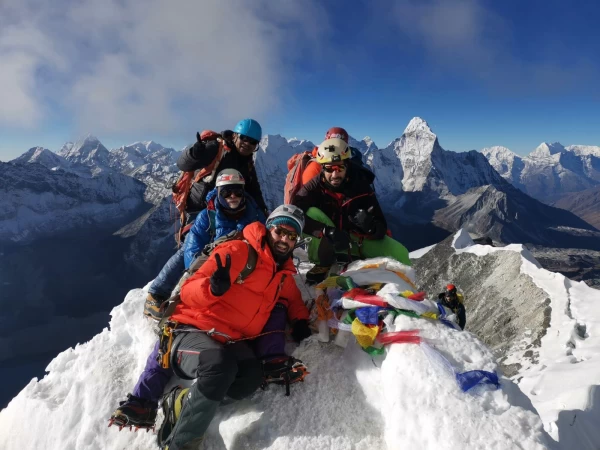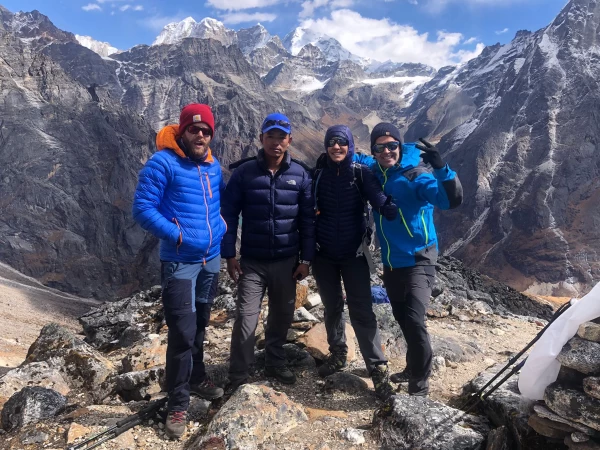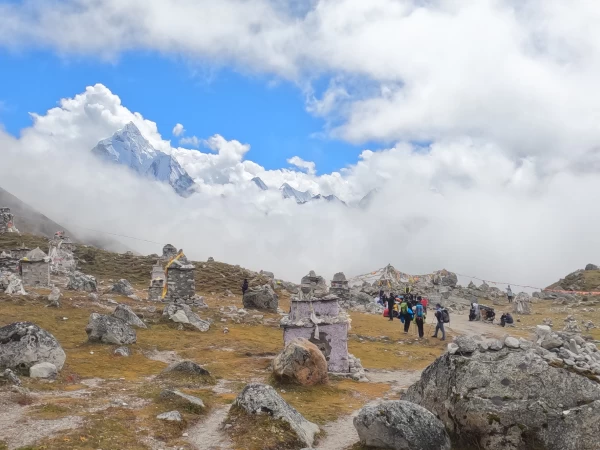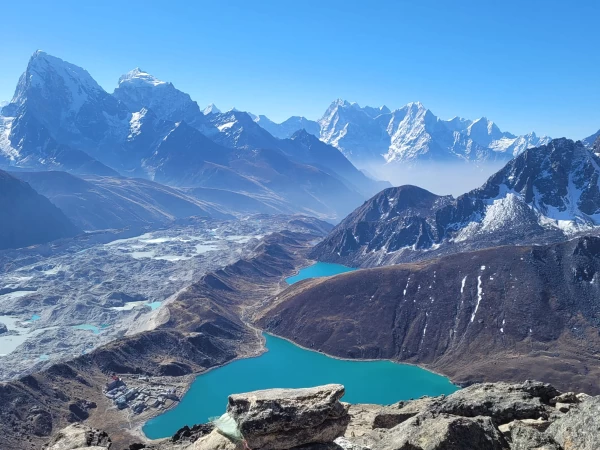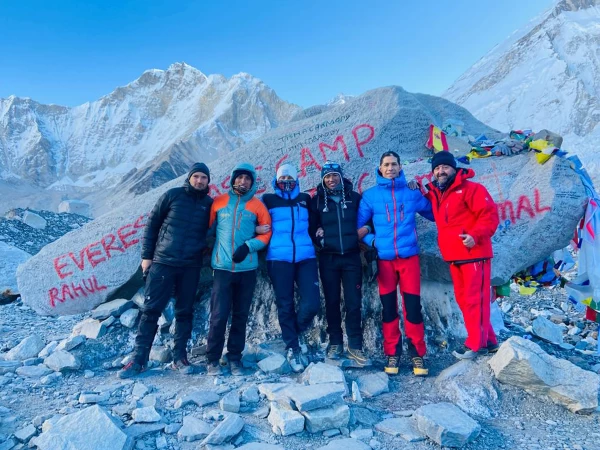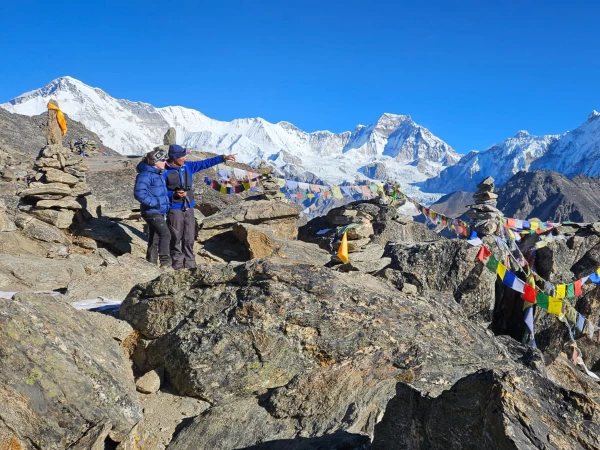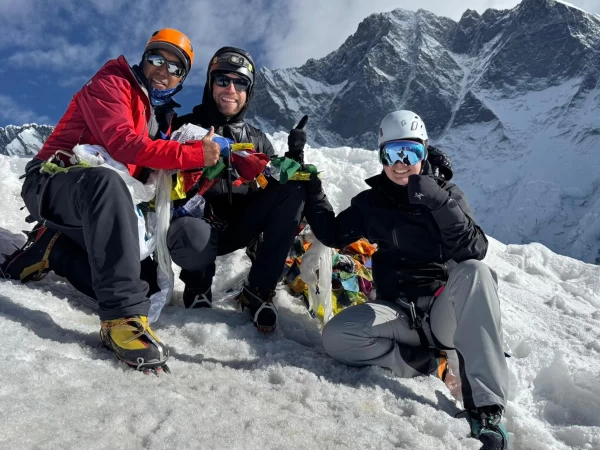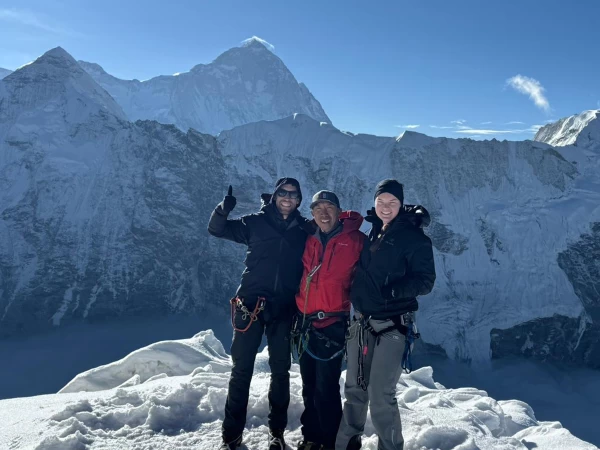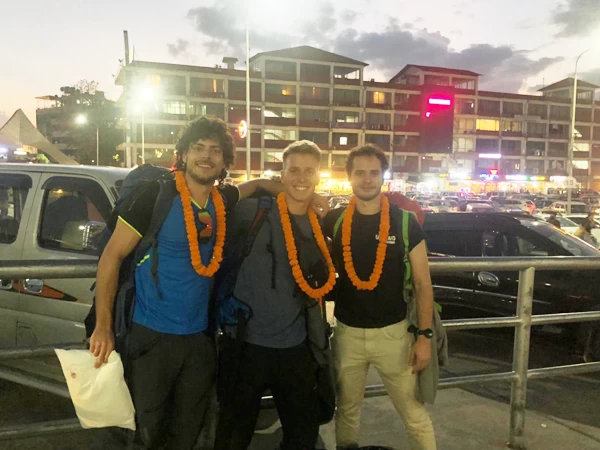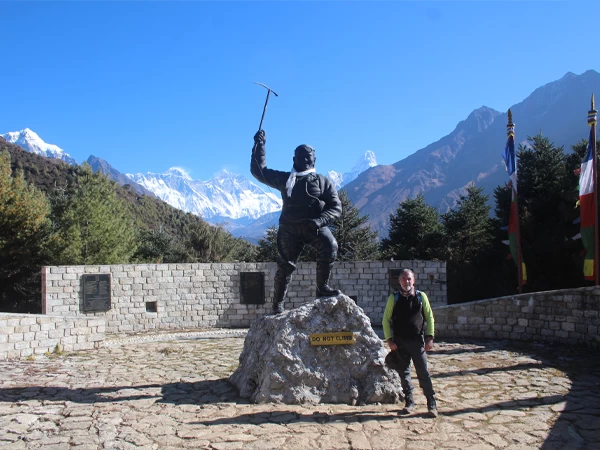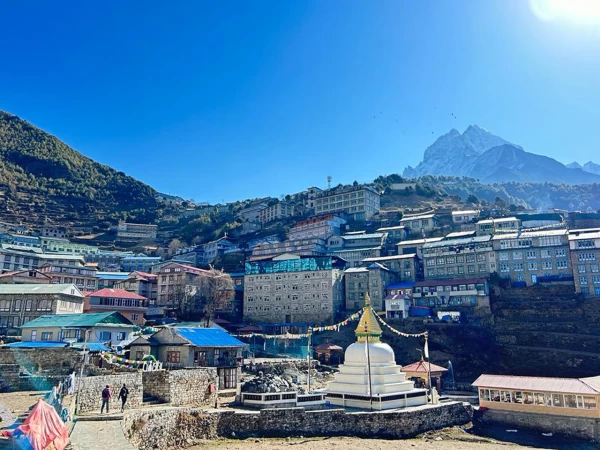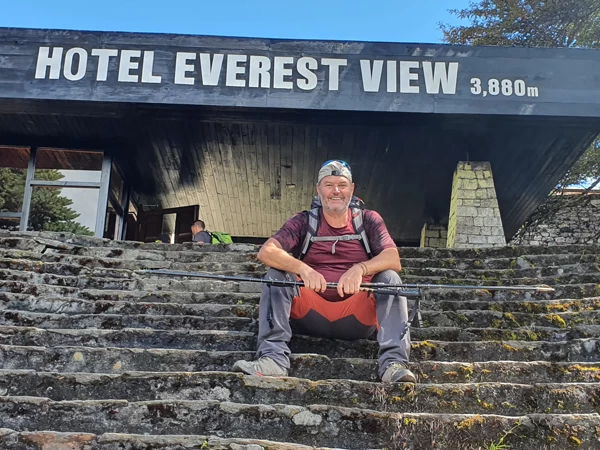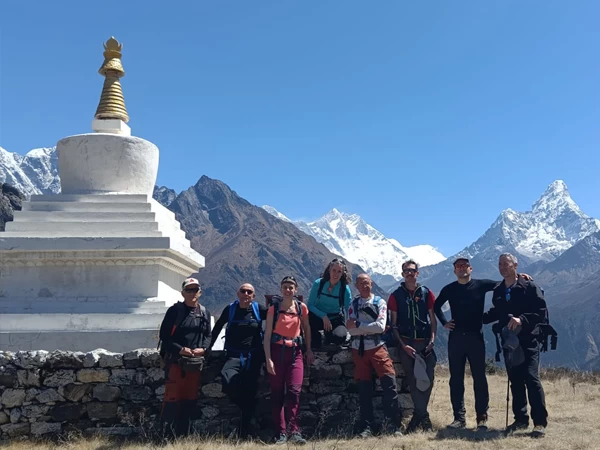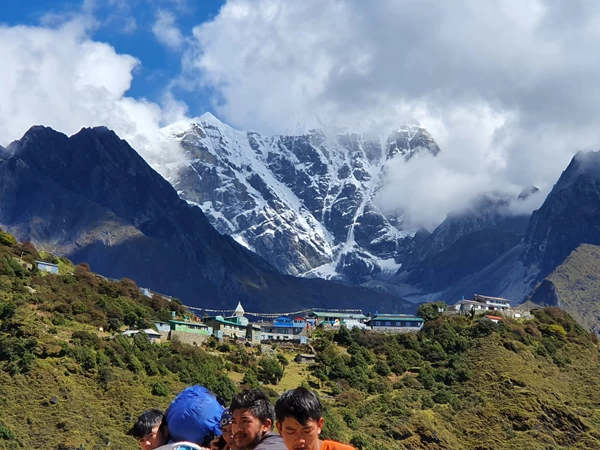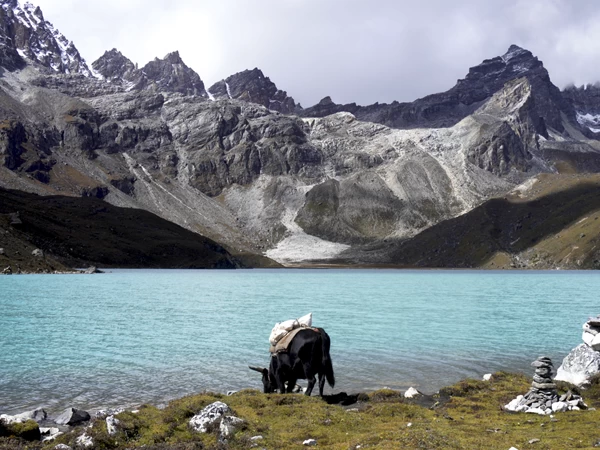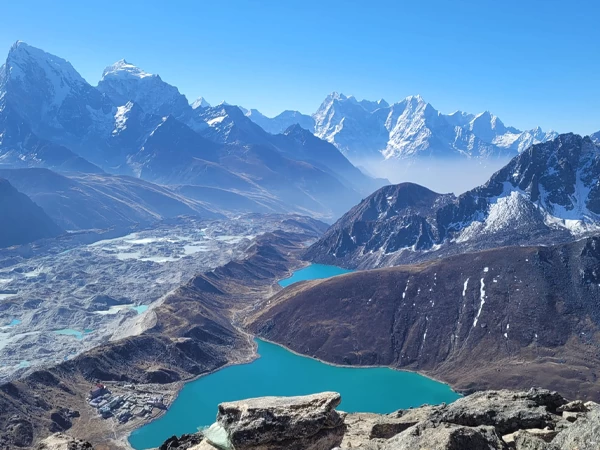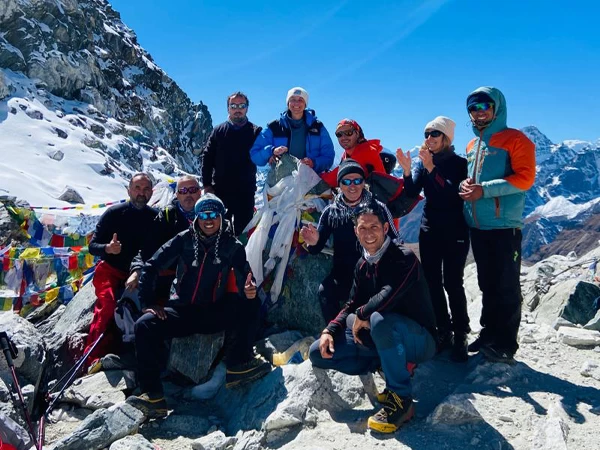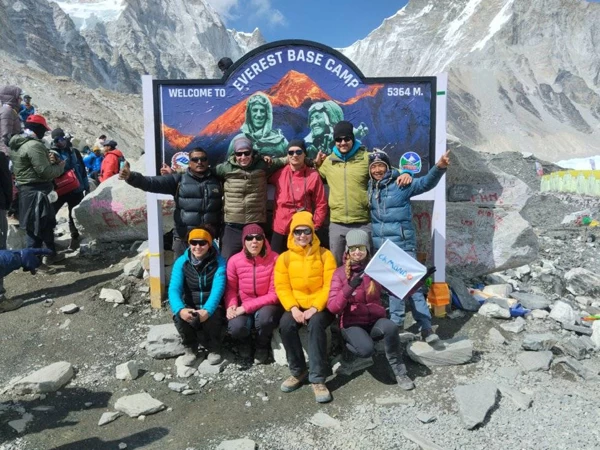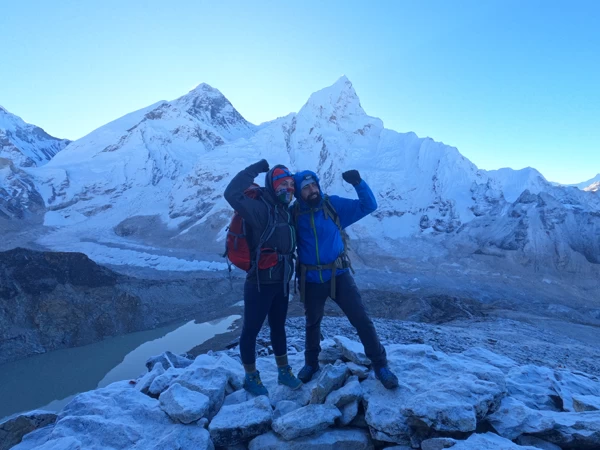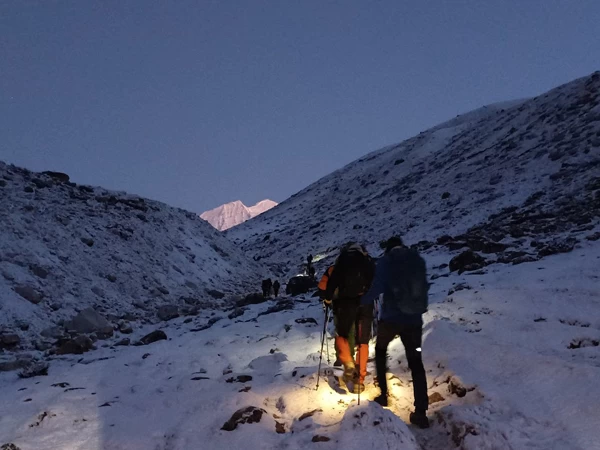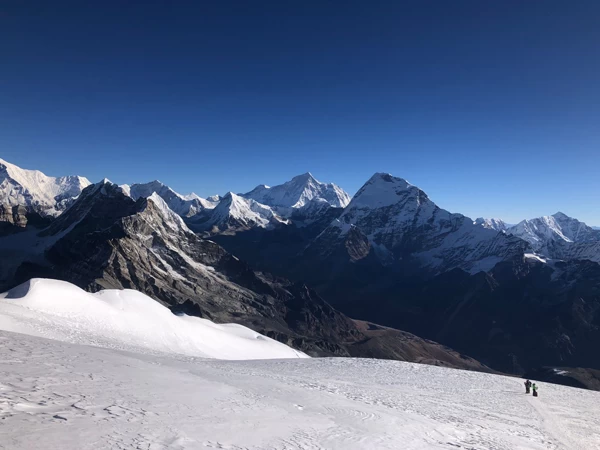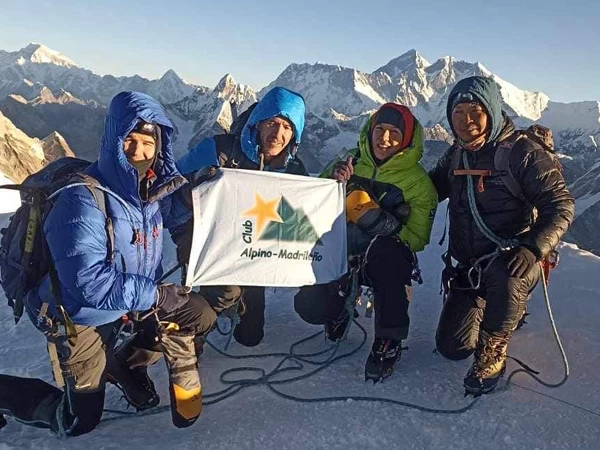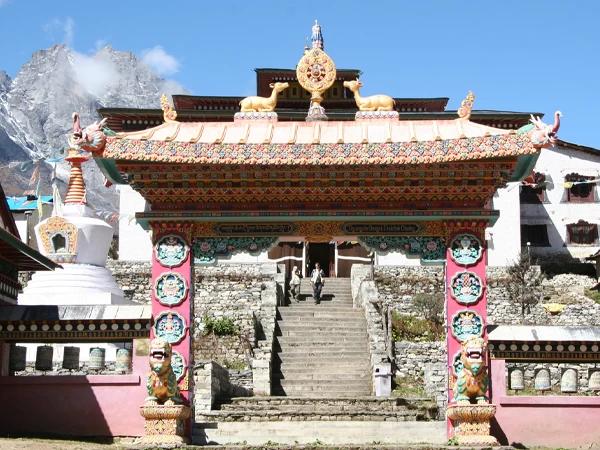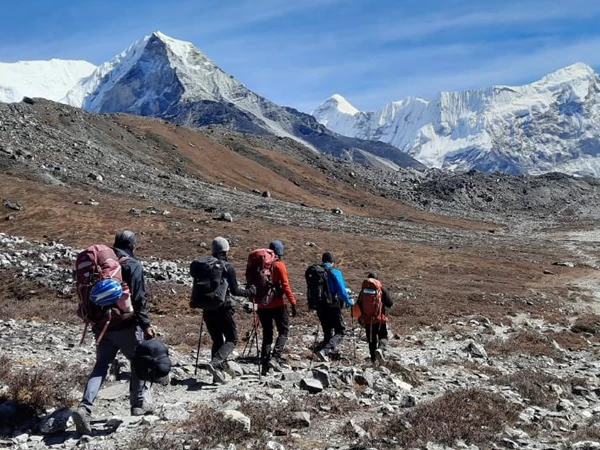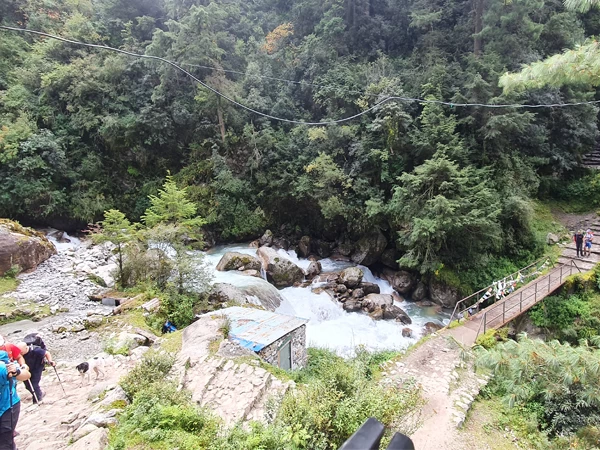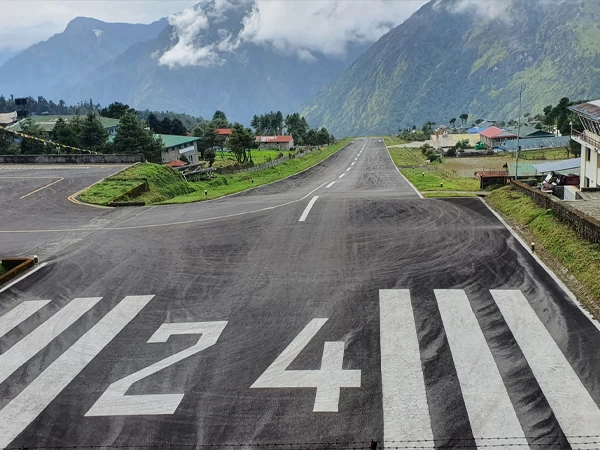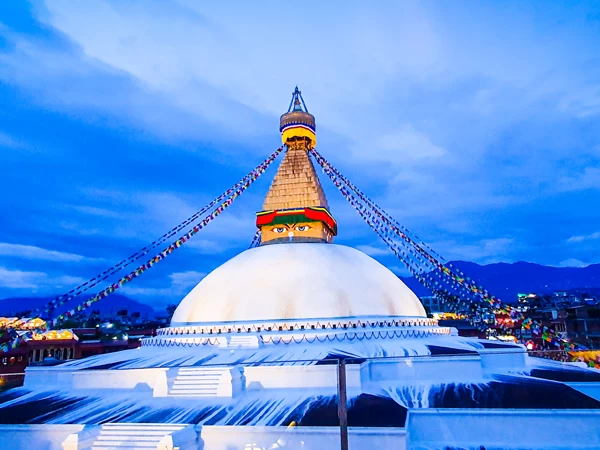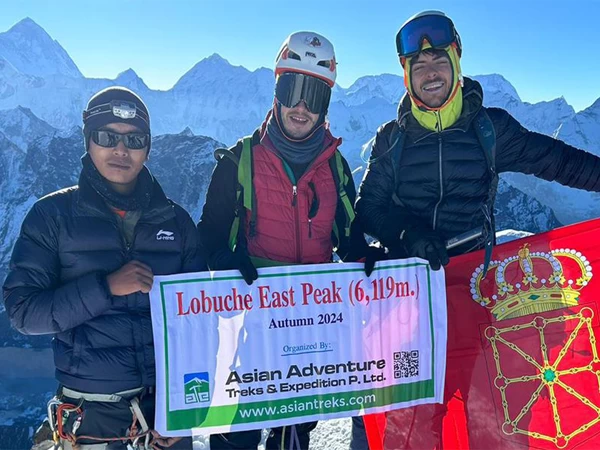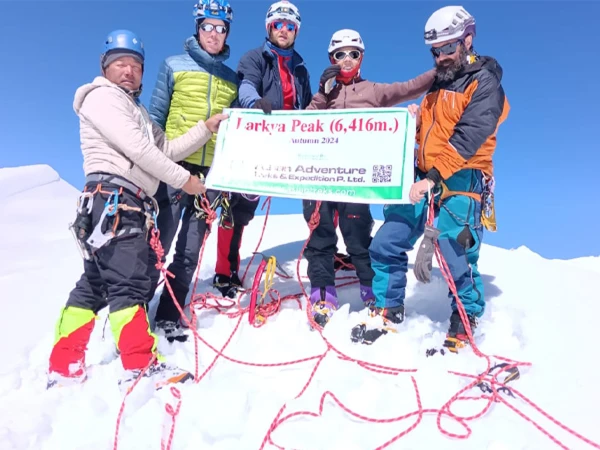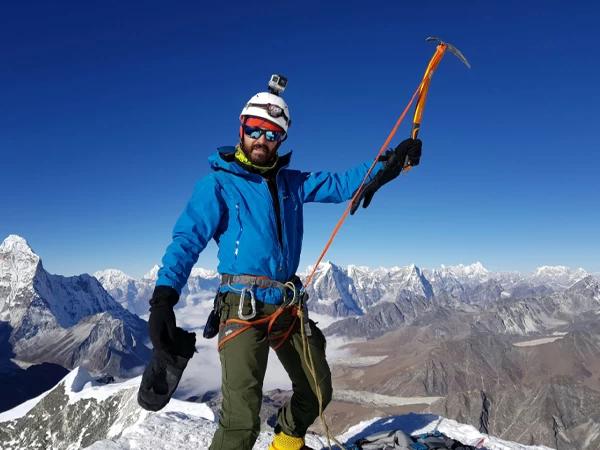"Island Peak Expedition: Blend of Trekking & Peak Climbing in the Everest Region"
Island Peak Climbing is an adventurous journey that combines a scenic trek in the famous Everest region with the excitement of summiting a beautiful Himalayan peak. Known locally as Imja Tse, Island Peak stands at 6160 meters (20,210 feet) and is one of the most popular trekking peaks in Nepal. It offers the perfect introduction to high-altitude mountaineering for adventurous trekkers who want to experience real climbing without needing years of technical training.
The name “Island Peak” was given in 1951 by Eric Shipton’s expedition team. From the nearby village of Dingboche, the mountain looks like an island rising from a sea of ice, which inspired its name. Technically, the peak is an extension of the ridge that descends from Lhotse Shar, the southeast face of one of the world’s highest mountains.
The adventure begins with a scenic mountain flight from Kathmandu to Lukla, the gateway to the Everest region. From there, you trek through the famous Khumbu Valley, passing through traditional Sherpa villages like Namche Bazaar, Tengboche, and Dingboche. Along the way, you get to explore ancient monasteries, enjoy delicious local food, and take in the spiritual and cultural richness of the region.
As you ascend, the trail offers breathtaking views of some of the world’s highest peaks, including Mount Everest, Lhotse, Makalu, and Ama Dablam. The journey to Island Peak Base Camp takes you through the remote and beautiful Imja Valley, a peaceful and dramatic high-altitude landscape of glaciers, icefalls, and towering cliffs.
Island Peak is more than just a trekking peak – it offers a true mountaineering experience. The climb involves:
- Walking on a glacier
- Using crampons, ice axes, and fixed ropes
- A steep final climb to a narrow ridge that leads to the summit
Even though the climb requires some basic technical skills, it is achievable for fit trekkers with a sense of adventure. Most climbers will get some basic training at base camp or with their guides, which makes this peak a great choice for those looking to climb their first Himalayan summit.
The feeling of reaching the top is absolutely unforgettable. From the summit, you’ll be surrounded by giant Himalayan peaks. The views of Lhotse’s massive south face, Makalu in the distance, and the iconic Ama Dablam make all the effort worth it.
One of the best things about the Island Peak climb is that it often includes part of the Everest Base Camp Trek, which helps with proper acclimatization. This not only prepares your body for the altitude but also gives you time to fully enjoy the beauty and culture of the region.
You’ll have the chance to explore Namche Bazaar, the lively Sherpa town, visit the Tengboche Monastery, one of the most spiritual places in the Himalayas and witness the warm hospitality and strong traditions of the Sherpa people.
Whether you choose Island Peak as a standalone adventure or as part of a longer journey (like preparing for bigger climbs in the future), this experience offers something truly special. It’s not just about reaching the summit—it’s about the people you meet, the places you see, and the personal achievement you gain along the way.
For those seeking an iconic Himalayan journey with a dash of adventure, a touch of challenge, and a whole lot of beauty, Island Peak Climbing is the perfect choice.
Why Choose the Island Peak Climbing Expedition?
Island Peak Climbing is an excellent entry point into Himalayan mountaineering, combining a scenic trek through the Everest region with a manageable yet rewarding ascent to 6160 meters. Suitable for both first-time climbers and seasoned trekkers, the journey offers stunning panoramas of towering peaks like Lhotse, Nuptse, Ama Dablam, and Makalu. The climb is guided and accessible, requiring no advanced technical skills, making it a great preparation for more demanding high-altitude expeditions. Along the route, you'll pass through traditional Sherpa villages, experience their vibrant culture, and enjoy the unforgettable feeling of summiting one of Nepal’s most iconic trekking peaks.
Who can do Island Peak Trek In Nepal?
Island Peak Climbing with Everest Base Camp Trek is ideal for healthy, fit adventurers who can comfortably hike 5–7 hours a day on rough mountain trails and are eager to learn basic glacier‑travel skills. You don’t need prior climbing experience, just the willingness to practice using crampons, ice axes, and fixed ropes under the guidance of experienced Sherpa. A good health (especially heart and lungs), a commitment to slow, steady acclimatization (often via the Everest Base Camp route), and a cooperative spirit for teamwork make this journey both safe and rewarding. Whether you’re 16 or 60, as long as you meet these requirements, Island Peak offers an incredible first taste of high‑altitude mountaineering.
Why Asian Adventure Treks & Expedition for 17 Days Island Peak Climbing + EBC Trek?
Choosing Asian Adventure Treks & Expedition means more than just booking a trek, it means traveling with trusted local experts who genuinely care about your experience, safety, and connection to the mountains. With over 20 years of experience in the trekking and climbing industry, we are committed to responsible and sustainable tourism. We carefully balance the thrill of adventure with your comfort, health, and safety at every stage of the journey.
Our professional team takes care of all logistics, including permits, domestic flights, ground transportation, and lodge accommodations. We also ensure that your walking pace and altitude gain are well managed for a safe and successful climb. Our licensed local guides and hardworking porters are not only highly skilled but also deeply rooted in the region, they share real stories and insights about Sherpa culture, Buddhist traditions, and daily mountain life.
Whether you’re a fit beginner or an experienced high-altitude trekker, we customize the itinerary to suit your pace, preferences, and fitness level. You’ll receive proper support for both trekking and climbing segments, including basic training at Island Peak Base Camp. With us, every detail is taken care of, so you can focus on soaking in the Himalayan beauty, crossing high mountain passes, and achieving your dream of summiting Island Peak.
Lukla Flight Information
Flight from Ramechhap (March, April, May, October & November)
During the peak seasons of (Spring) March to May and October to November (Autumn), due to the high volume of tourists and maximum flights to Lukla, the Government of Nepal normally decides to operate flights from Ramechhap instead of Kathmandu to avoid air traffic. If flying from Ramechhap, we will have to wake up at 1 or 2 AM and take a 5–6-hour drive from Kathmandu to Ramechhap in a private or shared vehicle. From Ramechhap, we will take a 20-minute flight to Lukla.
Flight from Kathmandu (December - September)
During the off-peak months from December to September (i.e Winter / Monsoon), due to fewer tourists, flights to Lukla operate directly from Kathmandu. We have to wake up at about 5 or 6 AM and then meet guide at the hotel and drive to TIA airport and take 35-minute flights to Lukla.
